The fraction is
$\frac{2}{3}$
Without loss of generality let the radius of the smaller circle equal 1.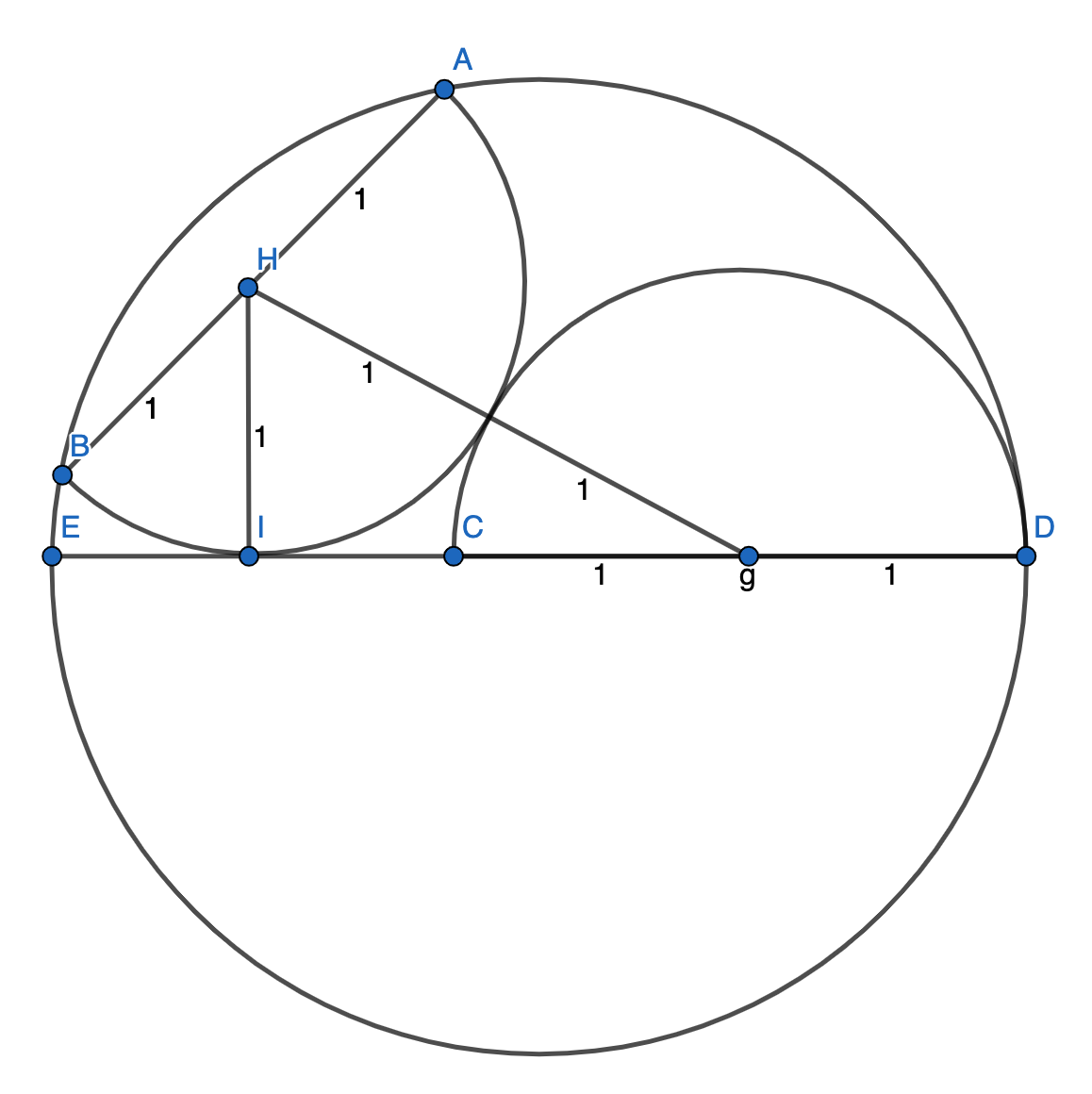
Edit:
Bubbler has observed in a comment that from here it is faster to continue like this
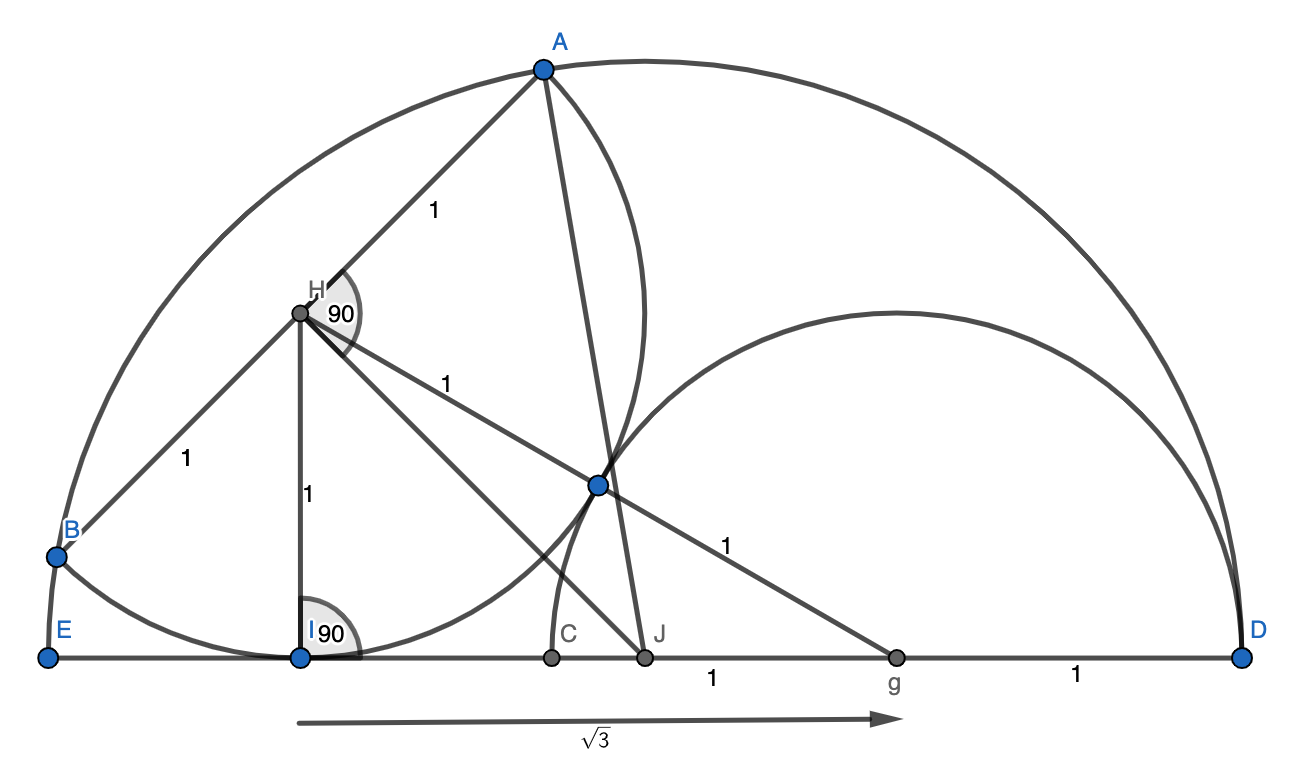
We have $JA=JD=r$, and since JH bisects the chord AB, $\angle{JHA}=90^\circ$.
We also have
$$JA^2=HA^2+(HI^2+IJ^2)$$ $$r^2=1^2+(1^2+(1+\sqrt{3}-r)^2)$$ Solving for r, $$r^2=1^2+1^2+r^2-2 \sqrt{3} r-2 r+2 \sqrt{3}+4$$ $$r=\frac{6+2\sqrt{3}}{2+2\sqrt{3}}=\sqrt{3}$$
Since $\angle HIG=90^\circ$ and $\arcsin(\frac{1}{2})=30^\circ$, we have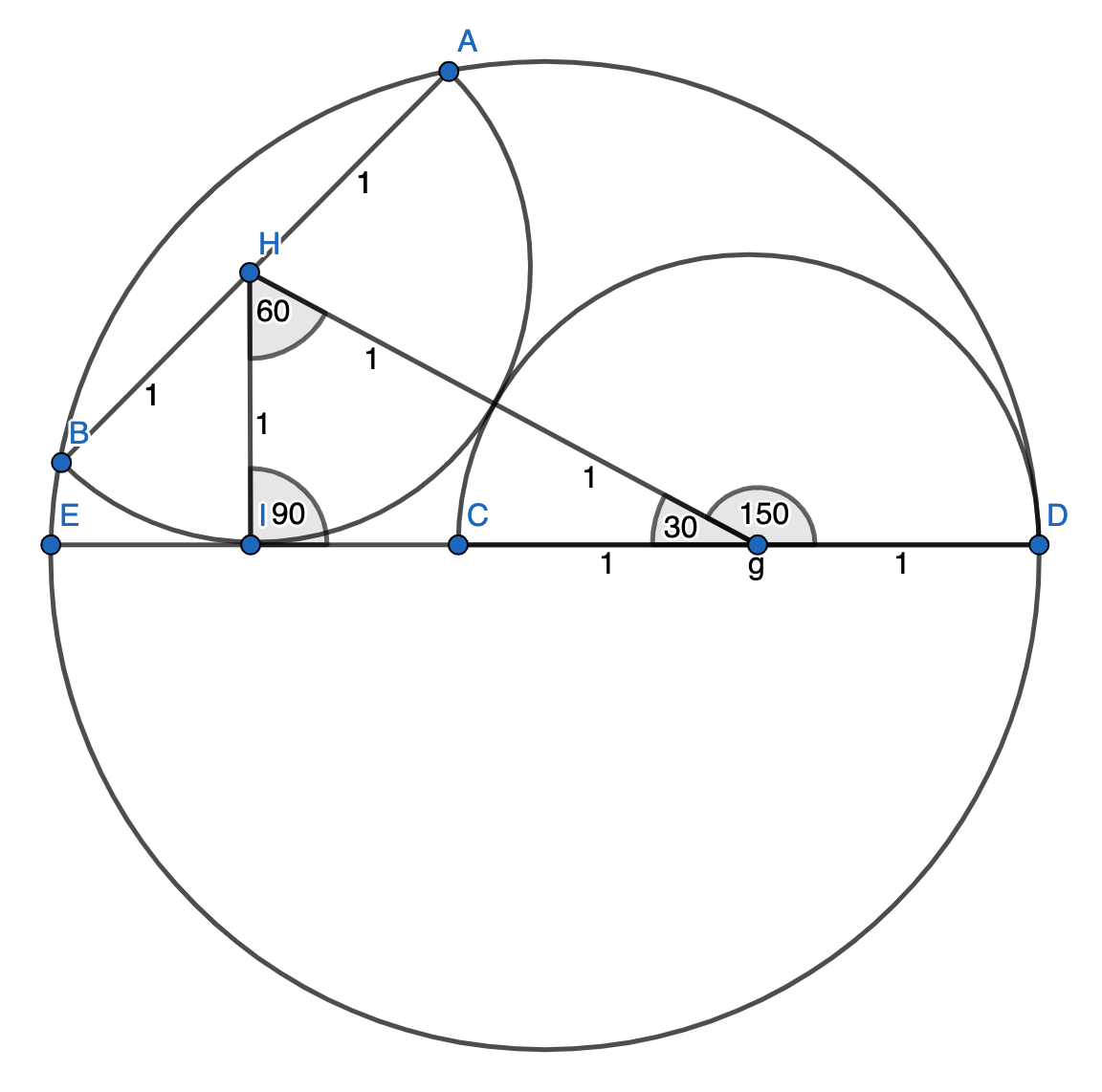
By the pythagorean theorem, ${HD}^2=HI^2+ID^2=1^2+(1+\sqrt{3})^2=5+2 \sqrt{3}$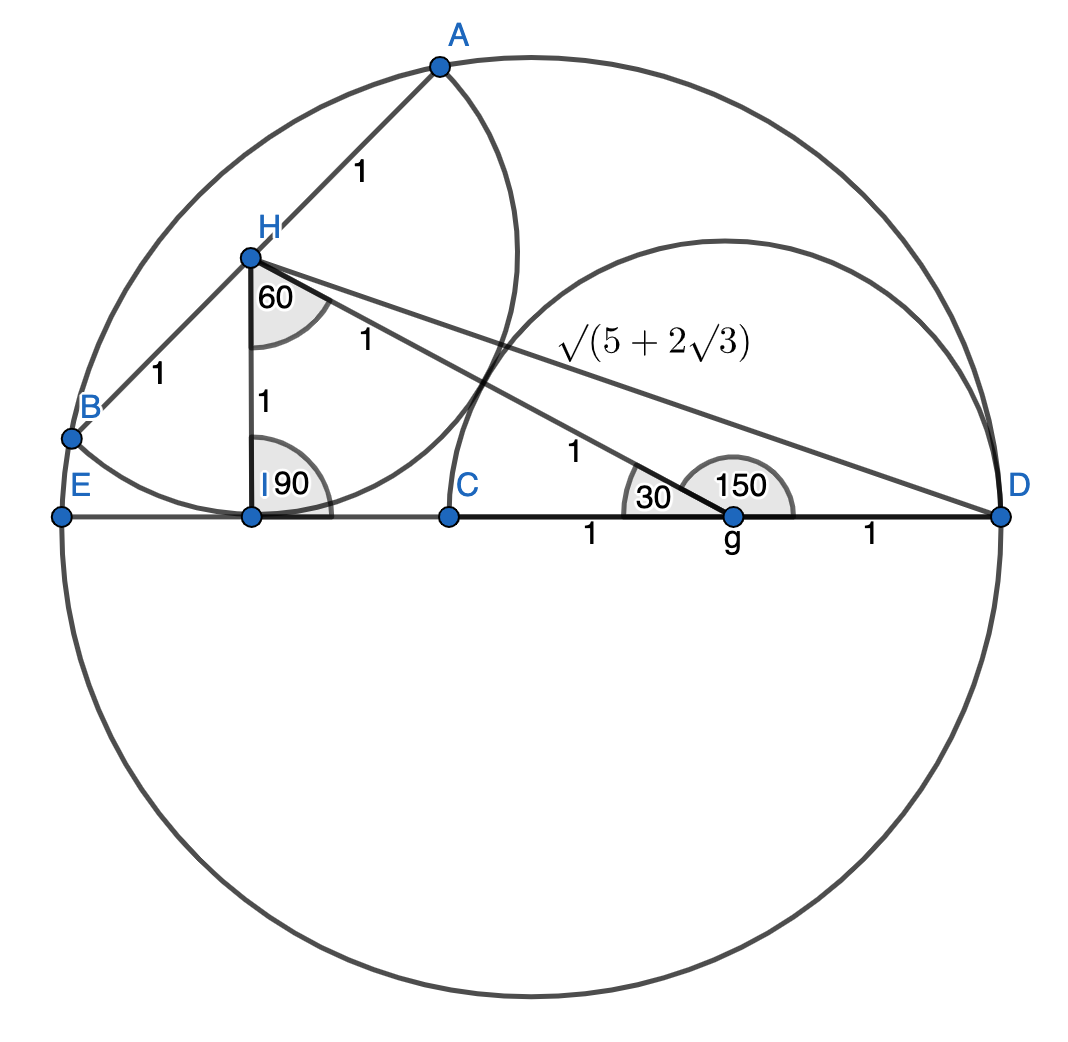
Now label the centre of the large circle J. We have $JA=JD=r$, and since JH bisects the chord AB, $\angle JHA=90^\circ $.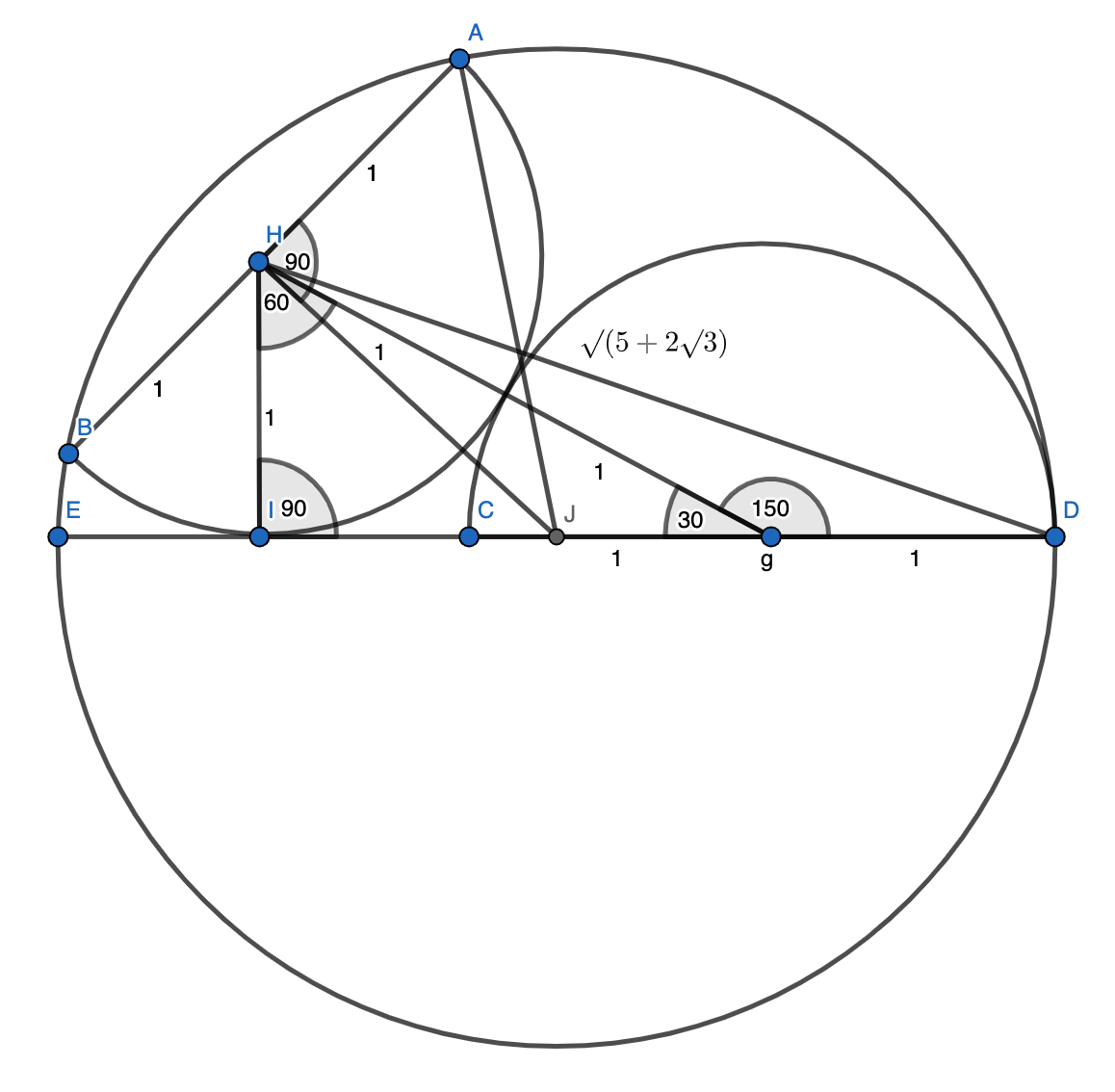 By the pythagorean theorem $$JH^2+1^2=r^2$$
By the pythagorean theorem $$JH^2+1^2=r^2$$
And by the cosine rule $$JH^2=JD^2+HD^2-2\cdot HD\cdot JD\cdot\cos(IDH)$$ $$JH^2=(r^2)+(5+2\sqrt{3})-2\cdot r\cdot \sqrt{5+2\sqrt{3}} \cos(IDH)$$ Combining these 2 equations, $$JH^2=r^2-1^2=(r^2)+(5+2\sqrt{3})-2\cdot r\cdot \sqrt{5+2\sqrt{3}} \cos(IDH)$$ Solving for r produces $$r=\frac{6+2\sqrt{3}}{2\sqrt{5+2\sqrt{3}}\cdot \cos(IDH)}$$ We can use the pythagorean theorem to show that $\cos(IDH)=\frac{\sqrt{4+2\sqrt{3}}}{\sqrt{5+2\sqrt{3}}}$ which now gives $$r=\frac{6+2\sqrt{3}}{2\sqrt{5+2\sqrt{3}}\cdot \frac{\sqrt{4+2\sqrt{3}}}{\sqrt{5+2\sqrt{3}}}}=\frac{6+2\sqrt{3}}{2\sqrt{4+2\sqrt{3}}}$$ Squaring both sides,
$$r^2=(\frac{6+2\sqrt{3}}{2\sqrt{4+2\sqrt{3}}})^2=\frac{48+24\sqrt{3}}{4(4+2\sqrt{3})}=3$$$$r^2=\left(\frac{6+2\sqrt{3}}{2\sqrt{4+2\sqrt{3}}}\right)^2=\frac{48+24\sqrt{3}}{4(4+2\sqrt{3})}=3$$ $$r^2=3$$ $$r=\sqrt{3}$$
And the ratio of the areas is
$$\frac{\frac{2\cdot \pi \cdot (1^2)}{2}}{\frac{\pi \cdot (\sqrt{3})^2}{2}}=\frac{2}{3}$$$$\frac{\ \frac{2\cdot \pi \cdot (1^2)}{2}\ }{\ \frac{\pi \cdot (\sqrt{3})^2}{2}\ }=\frac{2}{3}$$
